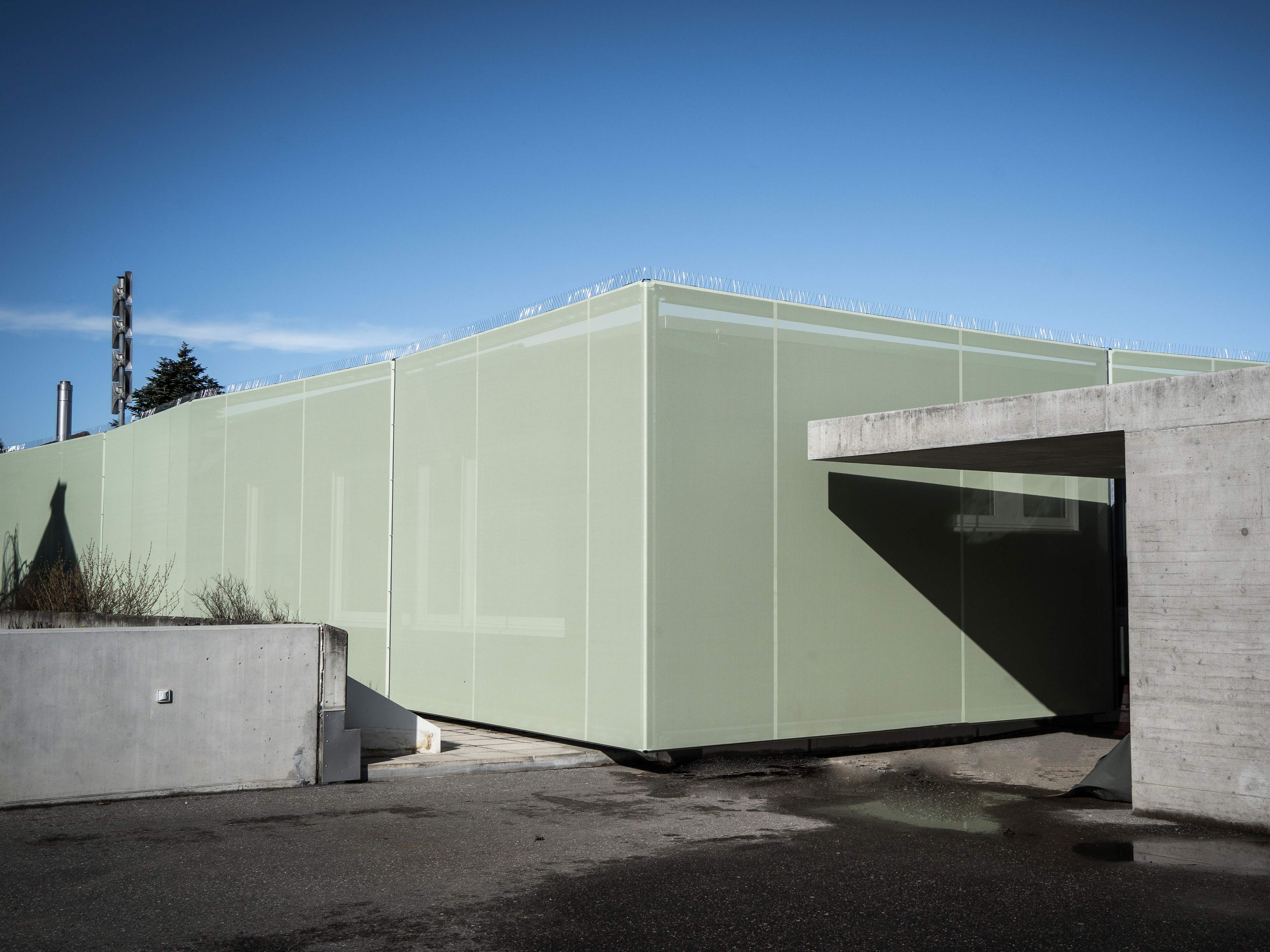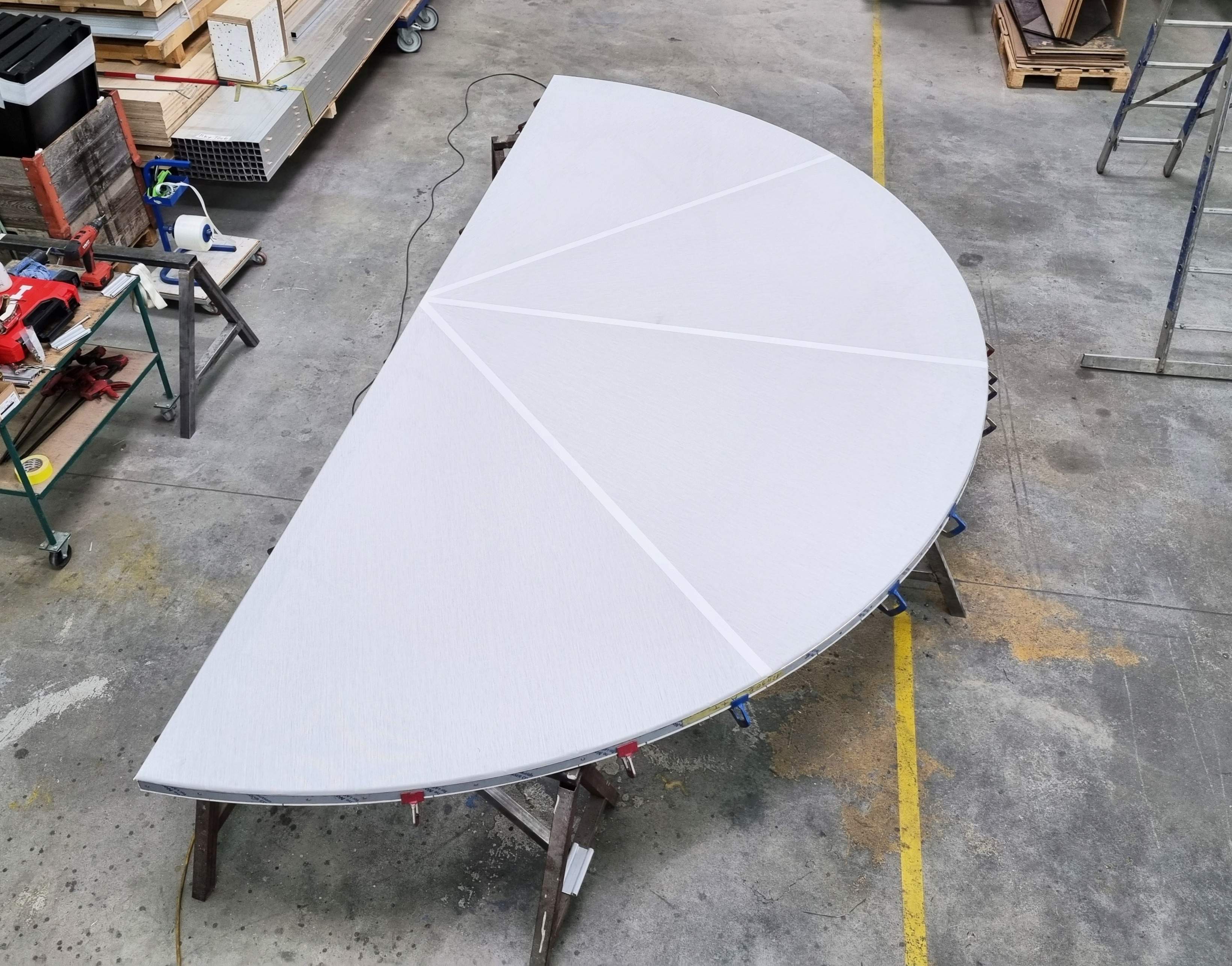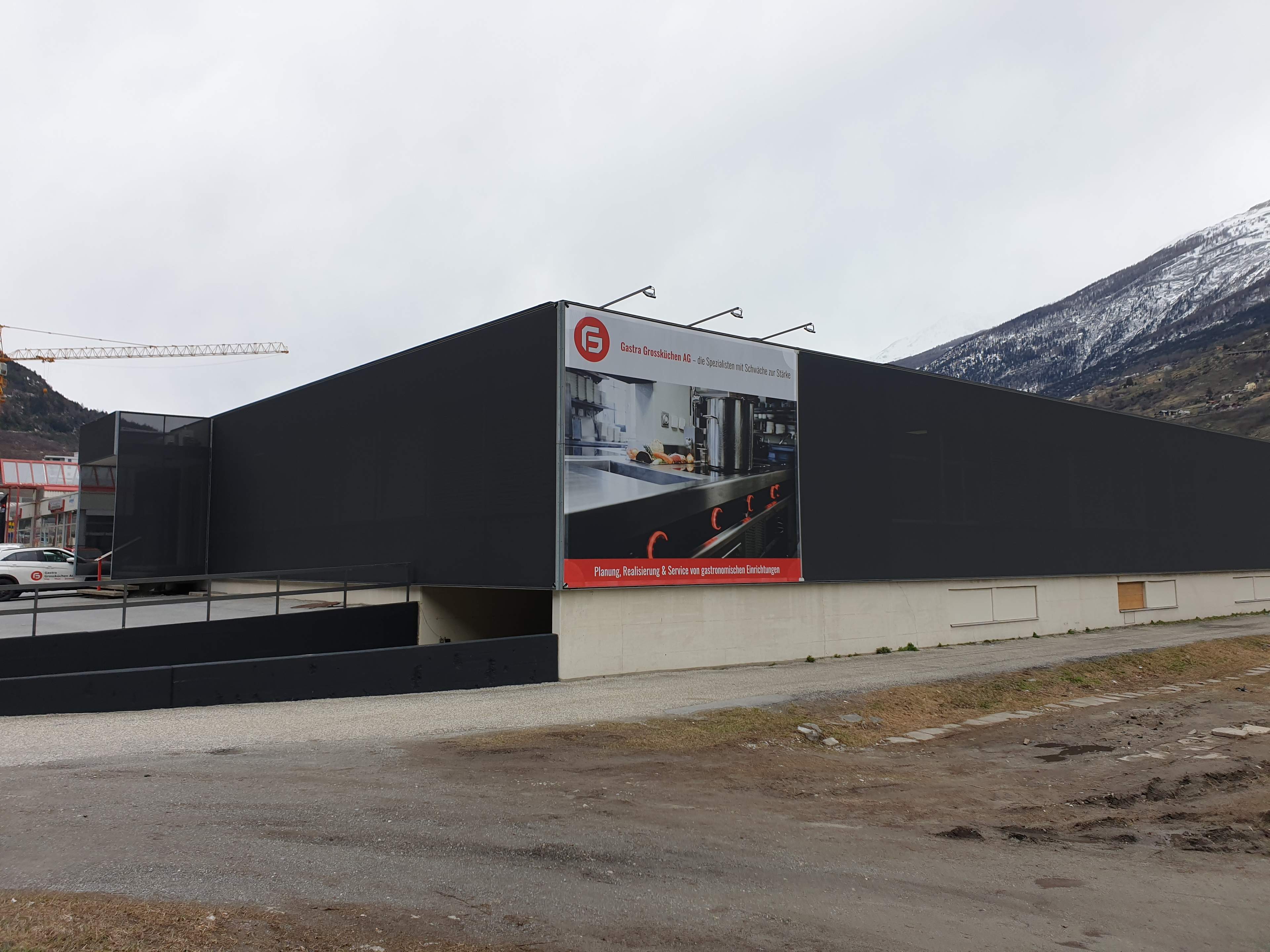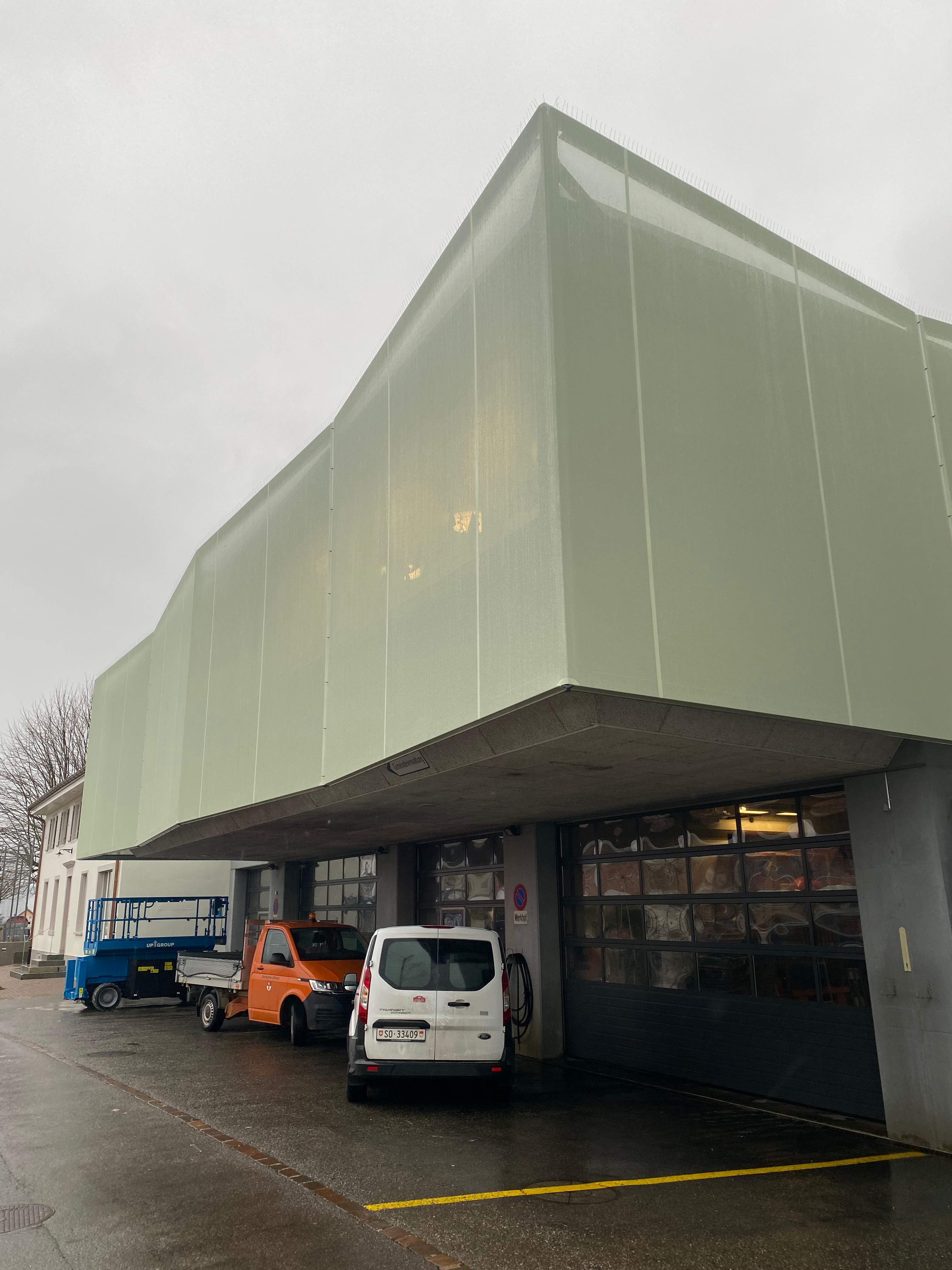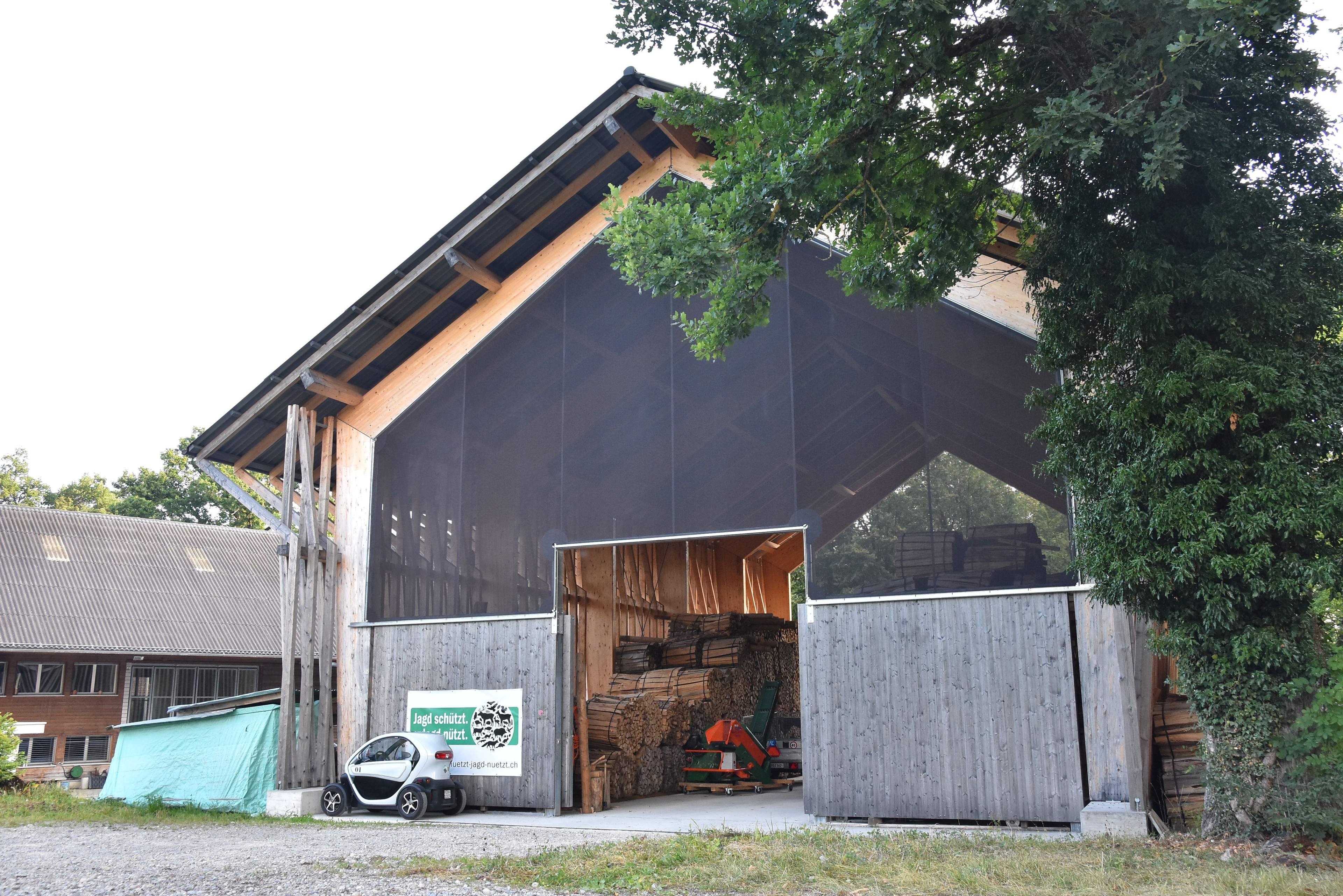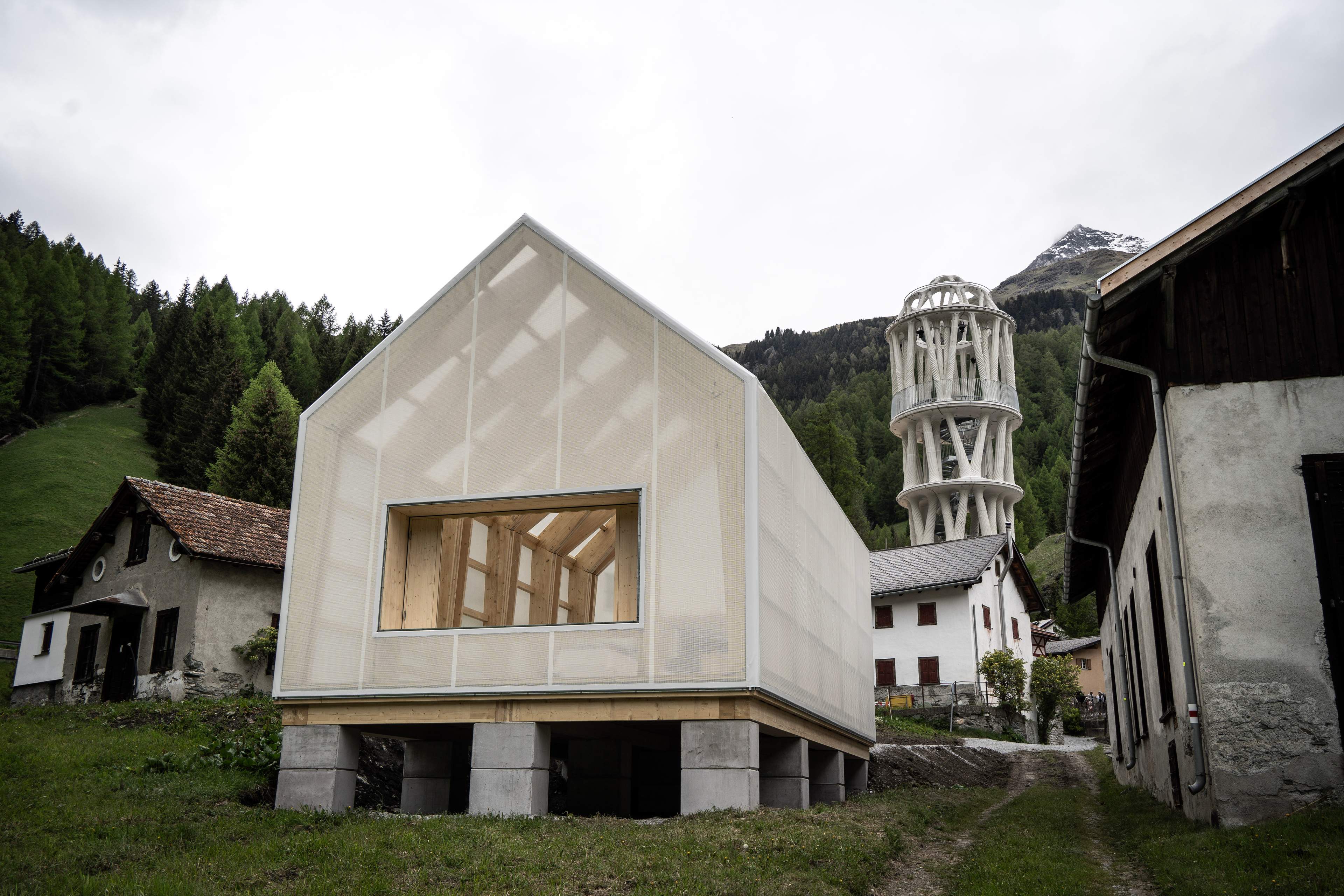Textile facades are gaining relevance in both renovation and new construction. While they may resemble large-format advertising banners at first glance, a closer look reveals a highly demanding architectural and engineering discipline.
Textile Architecture ≠ Advertising Technology
Contemporary textile facades are not simply an offshoot of the advertising industry. Rather, they represent a distinct construction method, sharing only certain visual or structural similarities. Especially with flat (planar) textile systems, this overlap can lead to confusion: while advertising panels may look alike, they are typically not designed for long-term use or high technical performance.
In contrast, architectural membranes must meet strict requirements in terms of durability, tensioning, structural integration and building physics.
Three Typical Construction Principles
Depending on context and function, flat textile facades can be categorized into three basic systems:
Element Facade (cassette system)
Prefabricated frames with integrated membranes.
→ Modular, self-supporting, ideal for standardized applications.Direct-Mount Facade
Membrane mounted directly onto the structural substrate.
→ A cost-efficient solution, especially for renovations and orthogonal geometries.Curtain Facade
A freely suspended substructure creates space for design and function.
→ Enables architectural freedom, integrated maintenance walkways, and expressive geometry.
In real-world projects, hybrid or modified versions are common. These three types serve as a useful reference rather than a strict classification.
A pre-installed frame for an element facade
Planning and Structural Engineering Challenges
Unlike double-curved membrane surfaces, flat textiles have no inherent geometric stability. Their load-bearing capacity depends entirely on pre-tensioning and edge detailing. This results in:
higher requirements for connection detailing,
adaptable tensioning mechanisms,
careful planning of substructures and support profiles.
Load transmission differs significantly from conventional facade materials: while solid materials transfer loads through bending, textiles rely purely on tensile forces. This results in complex force flows at edges and fixing points. For large or complex geometries, FEM-based structural analysis is indispensable – provided it's conducted with textile-specific expertise.
Four Built Examples
1. Renovation with a Direct-Mount Facade
An aging industrial building was upgraded using a printed membrane skin. Mounted directly onto the existing structure, the facade offers weather protection, branding, thermal improvement and a fresh architectural identity.
→ Type: Direct-Mount
Direct-Mount facade for building renovation
2. Curtain Facade for an Office Building
A freely tensioned facade was added to a mid-rise structure, creating a visually striking envelope without altering the building fabric. The system integrates walkways and technical zones behind the textile layer.
→ Type: Curtain Facade
Curtain Faca for building renovation
3. Textile Cladding for a Timber Warehouse
A simple open storage building was retrofitted with a flat textile cover to protect stored timber. Despite the large spans and basic structure, the result is a durable, well-tensioned envelope with reinforced edge details.
→ Type: Direct-Mount
Direct-Mount facade in a wooden supporting structure
4. Translucent Envelope for a Visitor Center
A new visitor center was fully enclosed with a translucent membrane system. The facade allows daylight to enter while revealing the timber structure inside – meeting both architectural and functional goals.
→ Type: Special form of Direct-Mount
A complete building envelope based on a Direct-Mount facade system.
Conclusion: Architectural Value Through Textile Technology
Flat textile facades are more than a lightweight alternative – they unlock new design expressions, construction methods and sustainable potentials. Especially in renovations or modular new builds, they offer high flexibility with minimal material usage.
Key Success Factors
Early integration in the design process – including static and detailing considerations
Well-thought-out cleaning and maintenance strategies
Precise edge detailing – avoiding thermal bridges and preserving airtight layers
Strategic use of geometry – including curved forms for advanced load behavior
This article draws on several years of practical experience in the design, refurbishment, and execution of membrane architecture – including projects I have led as a planning and project engineer at Bieri Tenta AG.
